Nestled right along the Hudson River in Tarrytown, N.Y., sits Washington Irving’s Sunnyside home. The home, purchased as a small stone farmhouse in 1835, sits on 10 acres, and is a mixture of Dutch Colonial Revival, Scottish Gothic, and Tudor Revival influences as Irving expanded and added on to it over the years.
Irving was a famous author/celebrity in his day, and is today still known for classics such as “Rip Van Winkle” (1819) and “The Legend of Sleepy Hollow” (1820); we listened to these and others as we drove.
Irving died in 1859, but the Irving family continued to inhabit the cottage until 1945, when it was preserved for history. As a result, it contains a large collection original furnishings and accessories.
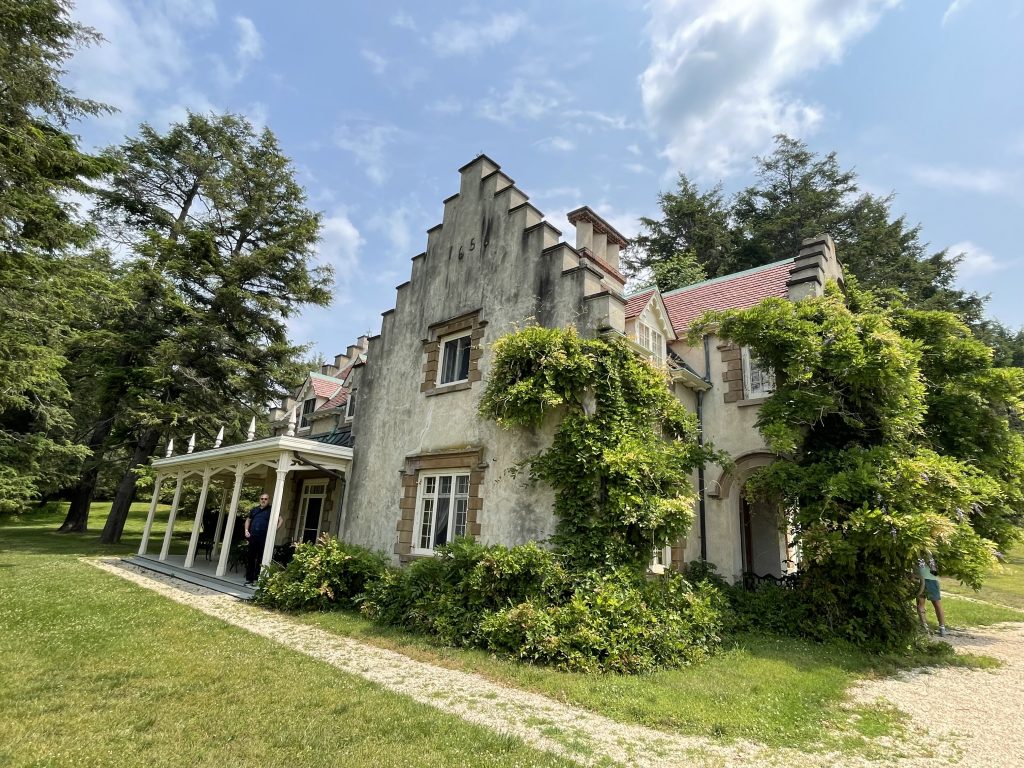
Sadly, no photos were allowed inside. Two views of the home are pictured at right and in the cover photo to this post.
The Sterling Iron Works in Tuxedo Park, N.Y., was the first iron mining and processing operation in North America. In began in the early 1700s and grew to a thriving community with 500 people, Lakeview. It continued operation into the early 20th century, and now many ruins lie on a one-mile-ish trail marked with historical plagues.
The Sterling Iron Works produced high-quality iron; the great chain that Washington had built to run across the Hudson River at West Point was made from the iron produced here.


American artist Edward Hopper, most famously the painter of Nighthawks (1942), was born in 1882 at a home in Nyack, N.Y. Hopper lived at the home for 21 years, but often returned to visit his sister Marian, who remained in the home throughout her lifetime. There’s not much left original from the Hopper family, but there are some furnishings, and more interestingly, sketches, paintings, and even a paint box used by Hopper.
Hopper often used local houses for painting inspiration, including his 1925 House by the Railroad, which we viewed in Haverstraw, N.Y., (it’s a private residence). Albert Hitchcock liked the look and feel of the house so much, he used it as the basis for the Bates Motel in Psycho! The home and painting are pictured below.


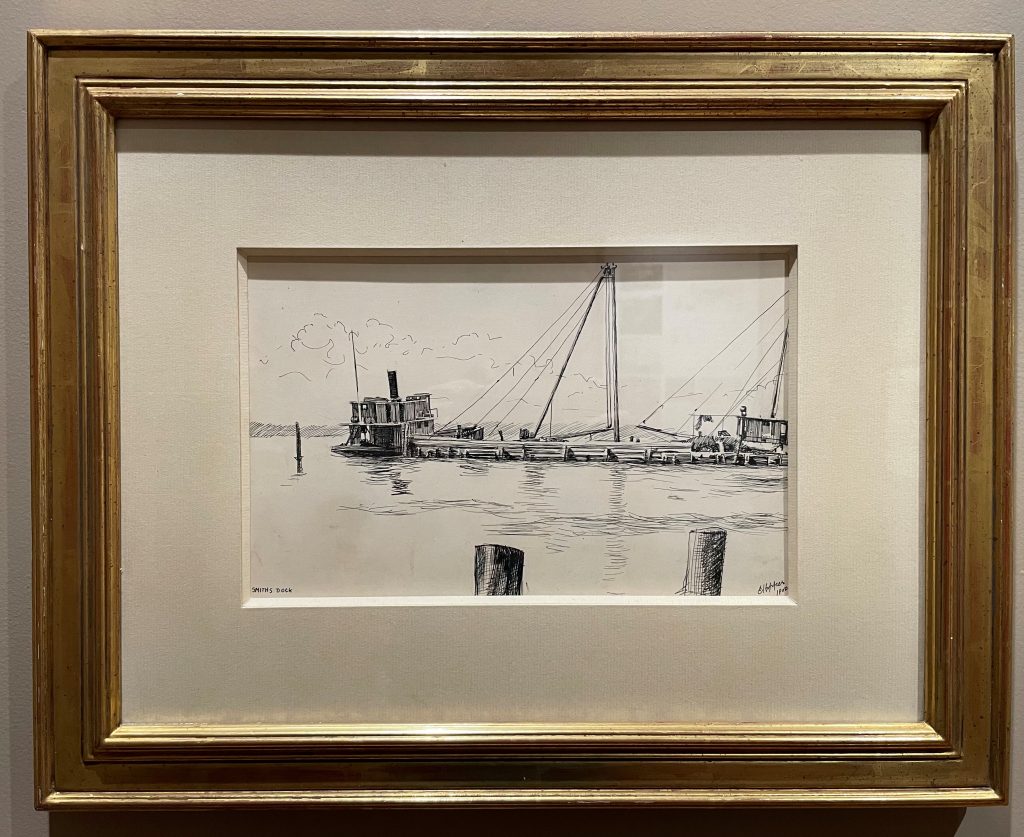
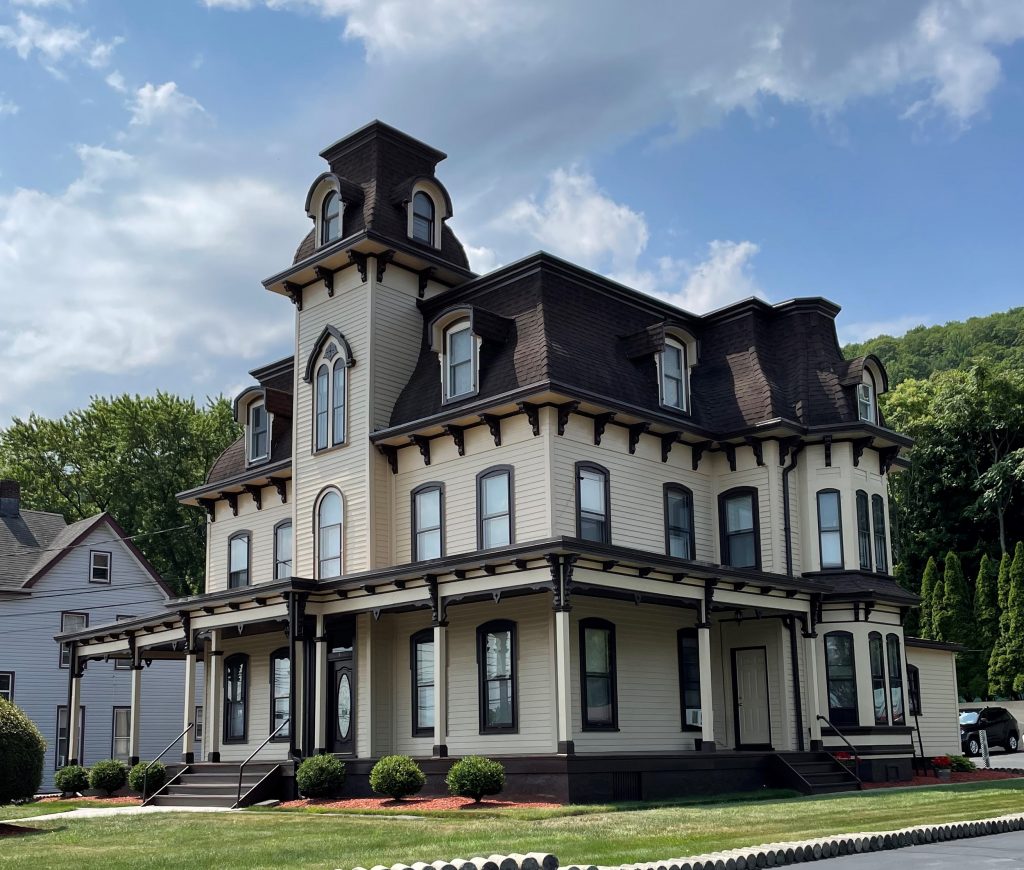
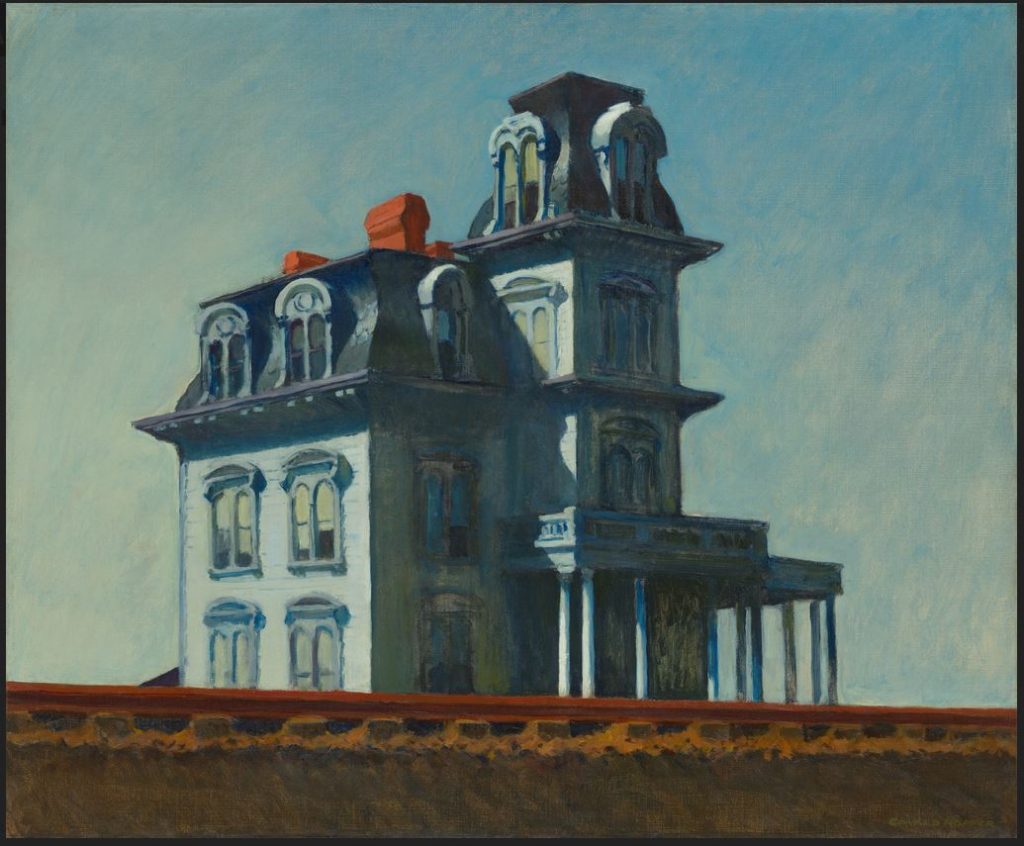

During World War I the Bluefields Rifle Range was built in Nyack, N.Y., as a training facility for the New York National Guard. Tunnels were constructed so that personnel could avoid being hit by stray bullets. The range closed in 1913 after just a few years of use (and many complaints from homeowners in the neighborhood), but the buildings, walls, and tunnels were not dismantled and left to the ravages of time and nature.
Today, with a bit of internet sleuthing, you can find the graffiti-covered ruins. Though supposedly there are miles of tunnels, we found just one short stretch – and if you look closely at the cracks running along the buckling wall in the middle picture below, you’ll understand that exploring just this stretch was good enough for us. One end of the tunnel can be accessed under a tree’s roots, like in a fantasy movie.

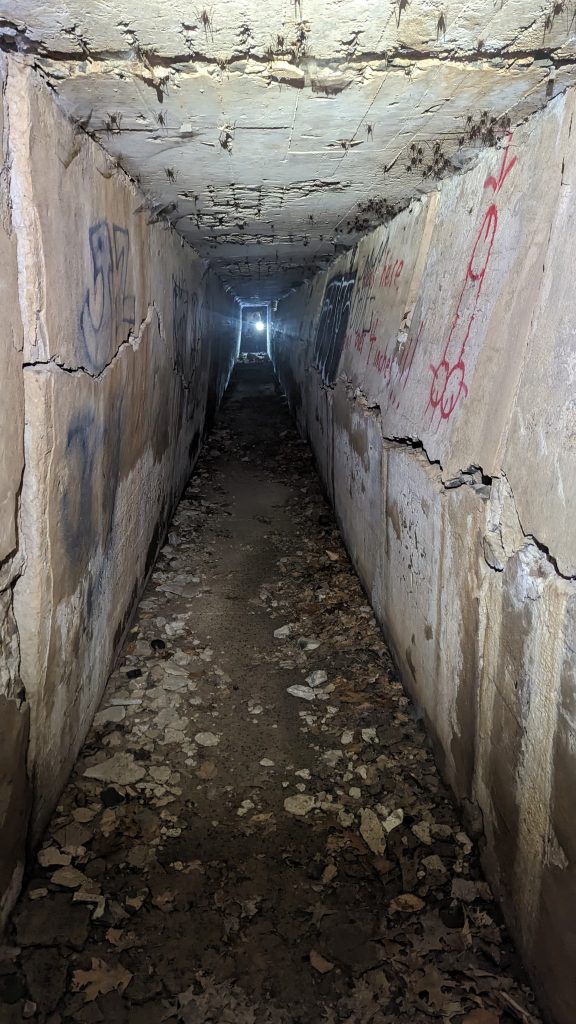
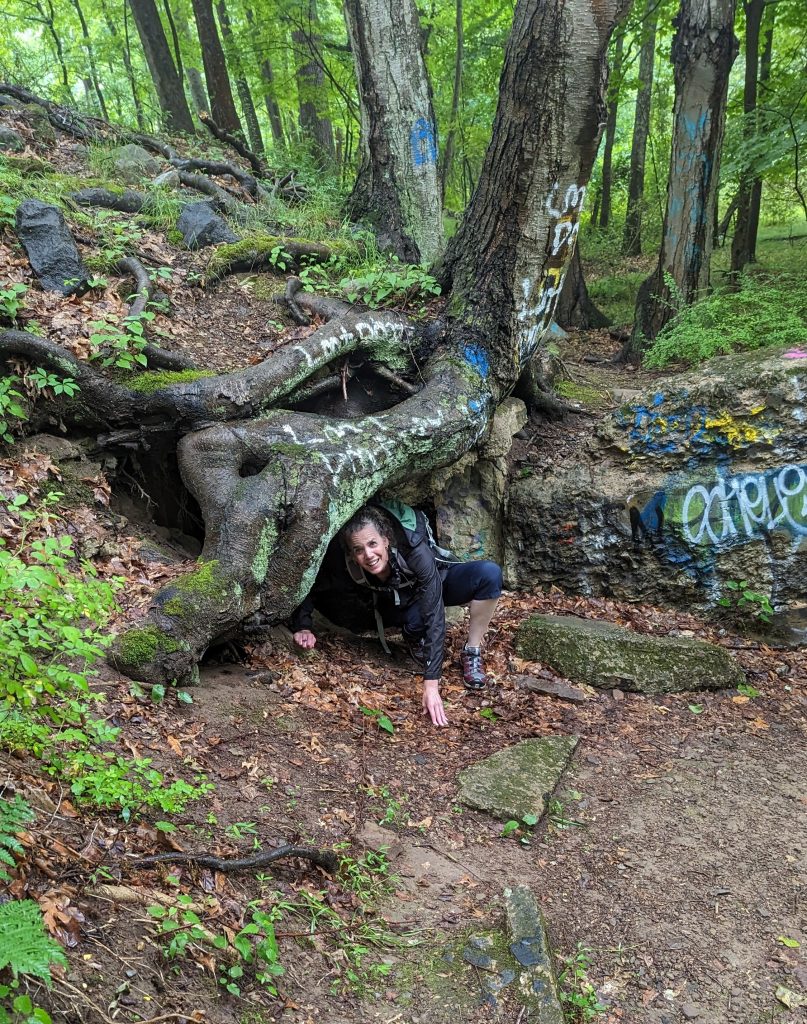
The Walkway Over the Hudson between Poughkeepsie and Highland, N.Y., is a former railroad bridge completed in 1889. At its highest point it is 212 feet above the Hudson River.
The bridge remained in operation until 1974, when it was damaged by fire. In 2009 it was reopened as a 1.25 miles-long pedestrian walkway, the longest such walkway in the world for several years until a Colorado bridge usurped the title in 2016.
I walked across and back once on a walk-n-talk with Jenni, then again with Doug (gotta get the steps in!).
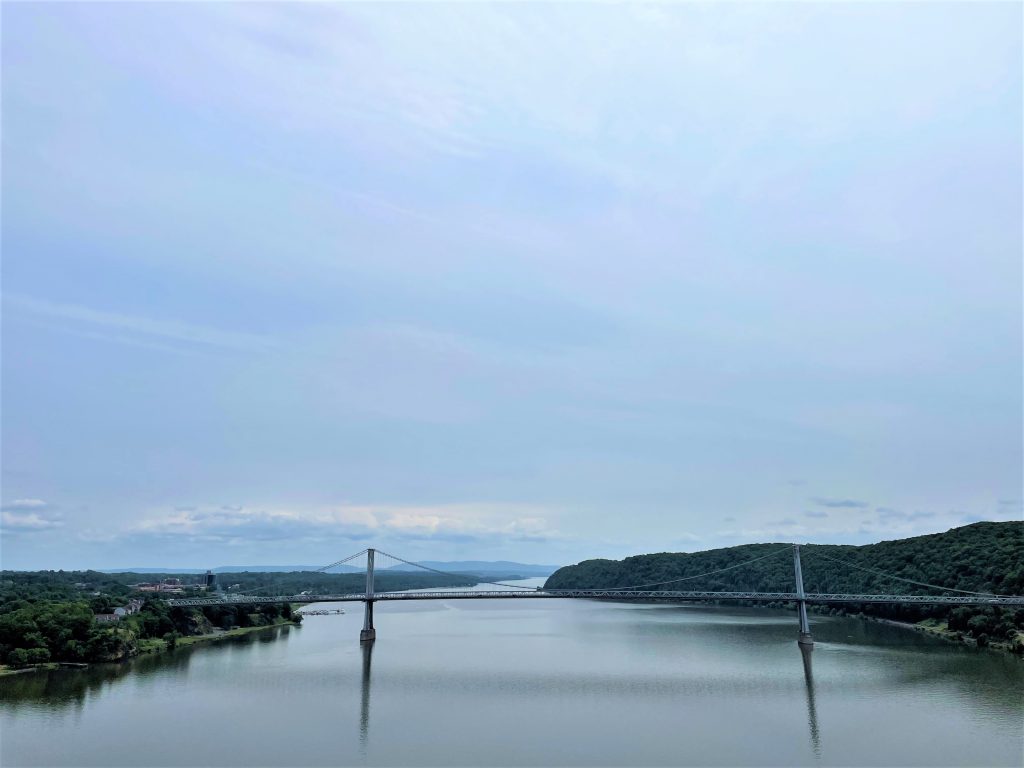
A view from the bridge is above right, looking at the current Interstate 84 bridge across the Hudson, and a view of the walkway from the center of the span is below left. Oops, how did a flower picture sneak into my post (from the Lenoir Preserve)?!
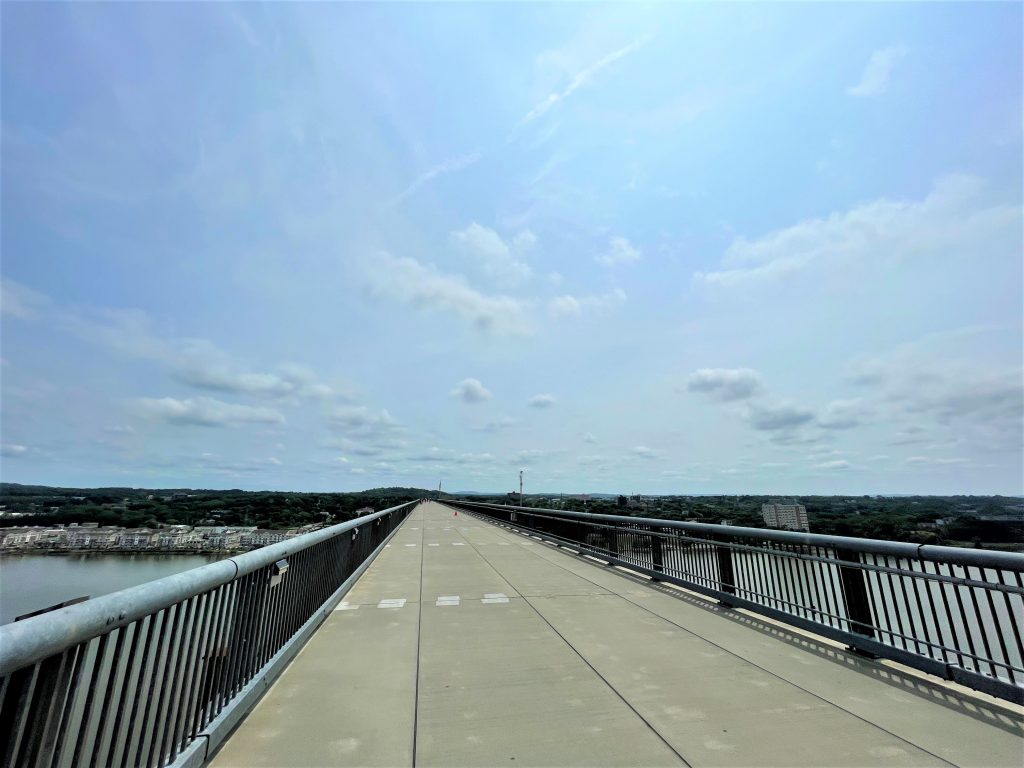
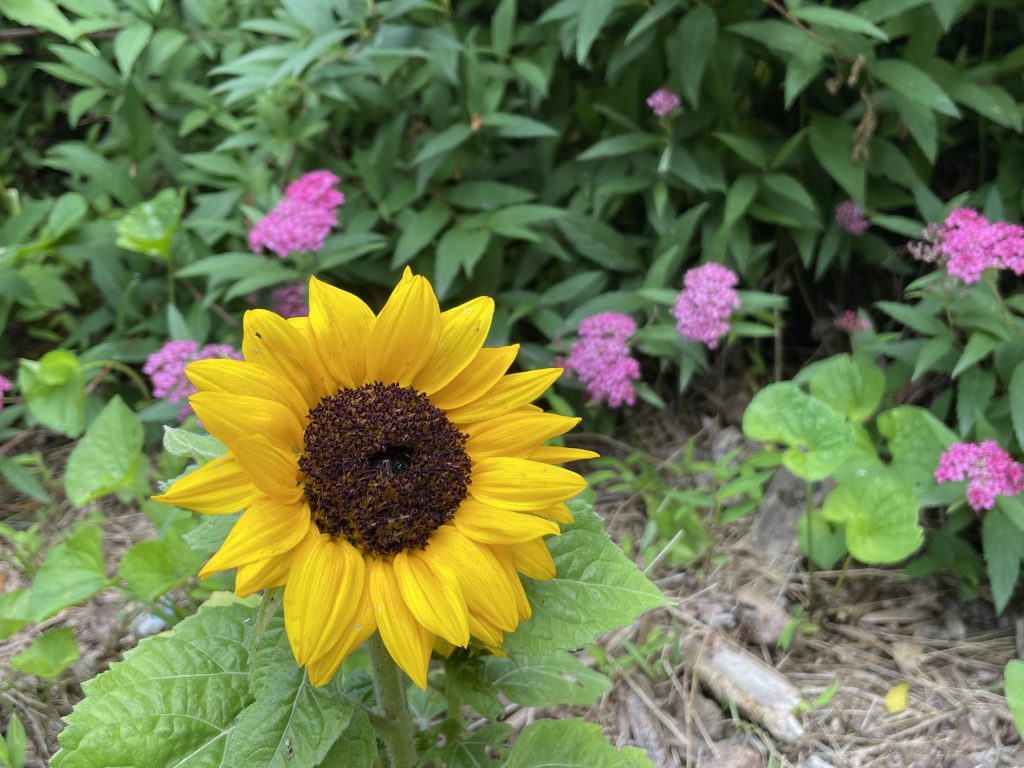





2 thoughts on “A Few Sites along the Lower Hudson River in New York”